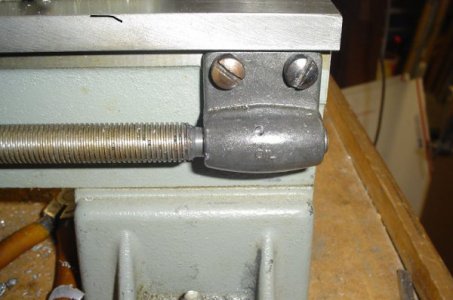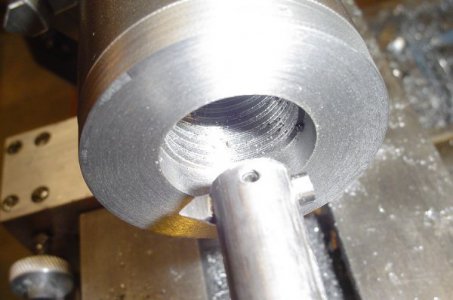- Joined
- Dec 27, 2014
- Messages
- 4,087
OK, I need help. I'm trying to make an ER40 collet holder to screw on the spindle. I'm to the point of chasing 1" x 10 threads. The first three passes were OK, then things started going wrong. I finally realized that the lead screw was shifting to the right as I engaged the half nut, giving me multiple tracks.
So. I moved it all the way to the right (it won't shift any more) and the gears are enough out of alignment that they wobble and vibrate, threatening to jump apart.
This thread is scrap, I can reverse the piece of material and start over at the other end, but if I can't depend on the lathe, what's the point?
Is there a way I can pin the lead screw at the left end of it's travel? put a dowel pin in it? or is there something I'm missing. At one time I spent 8 hrs a day chasing threads for a living, so its' not me.
So. I moved it all the way to the right (it won't shift any more) and the gears are enough out of alignment that they wobble and vibrate, threatening to jump apart.
This thread is scrap, I can reverse the piece of material and start over at the other end, but if I can't depend on the lathe, what's the point?
Is there a way I can pin the lead screw at the left end of it's travel? put a dowel pin in it? or is there something I'm missing. At one time I spent 8 hrs a day chasing threads for a living, so its' not me.


